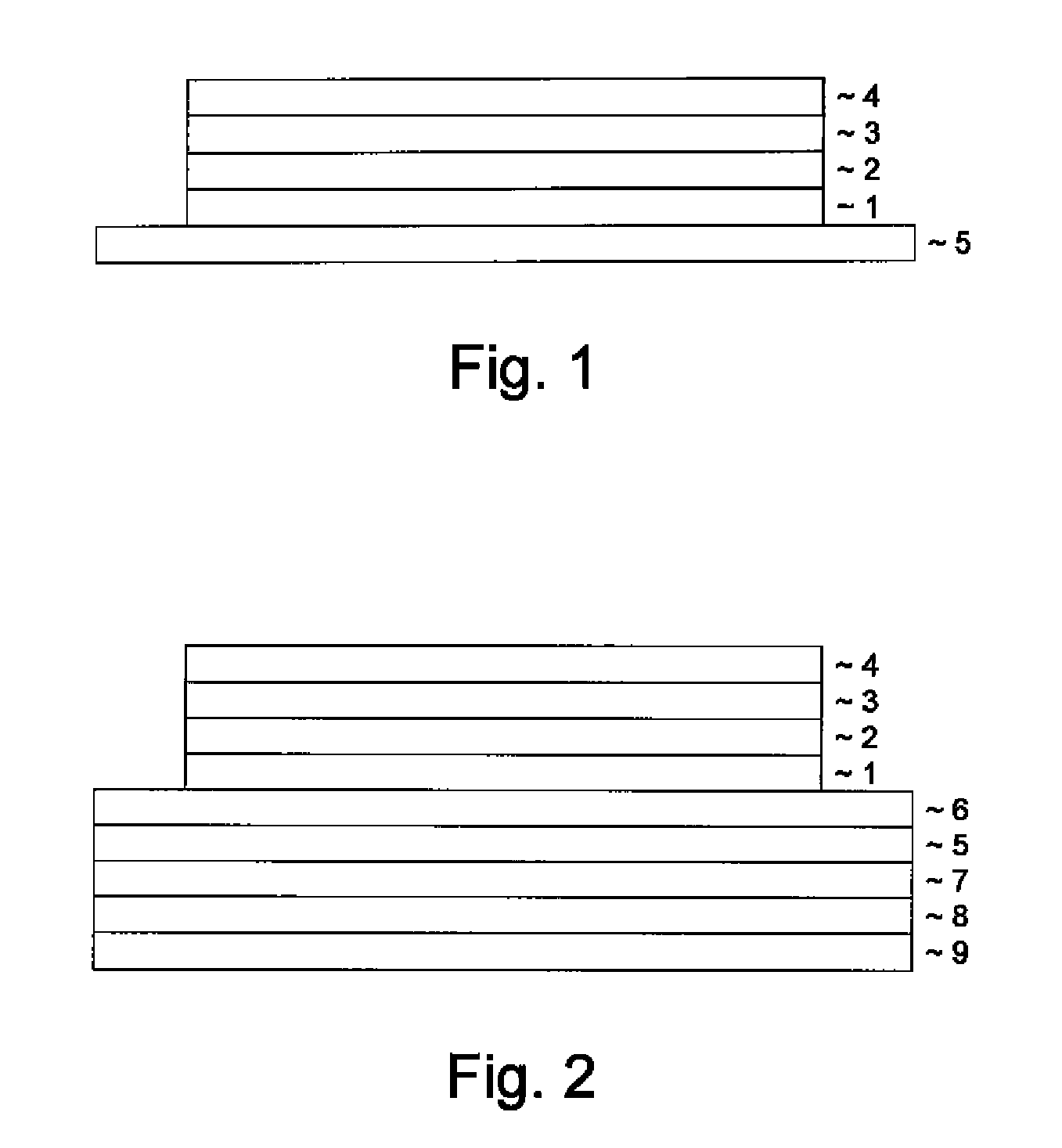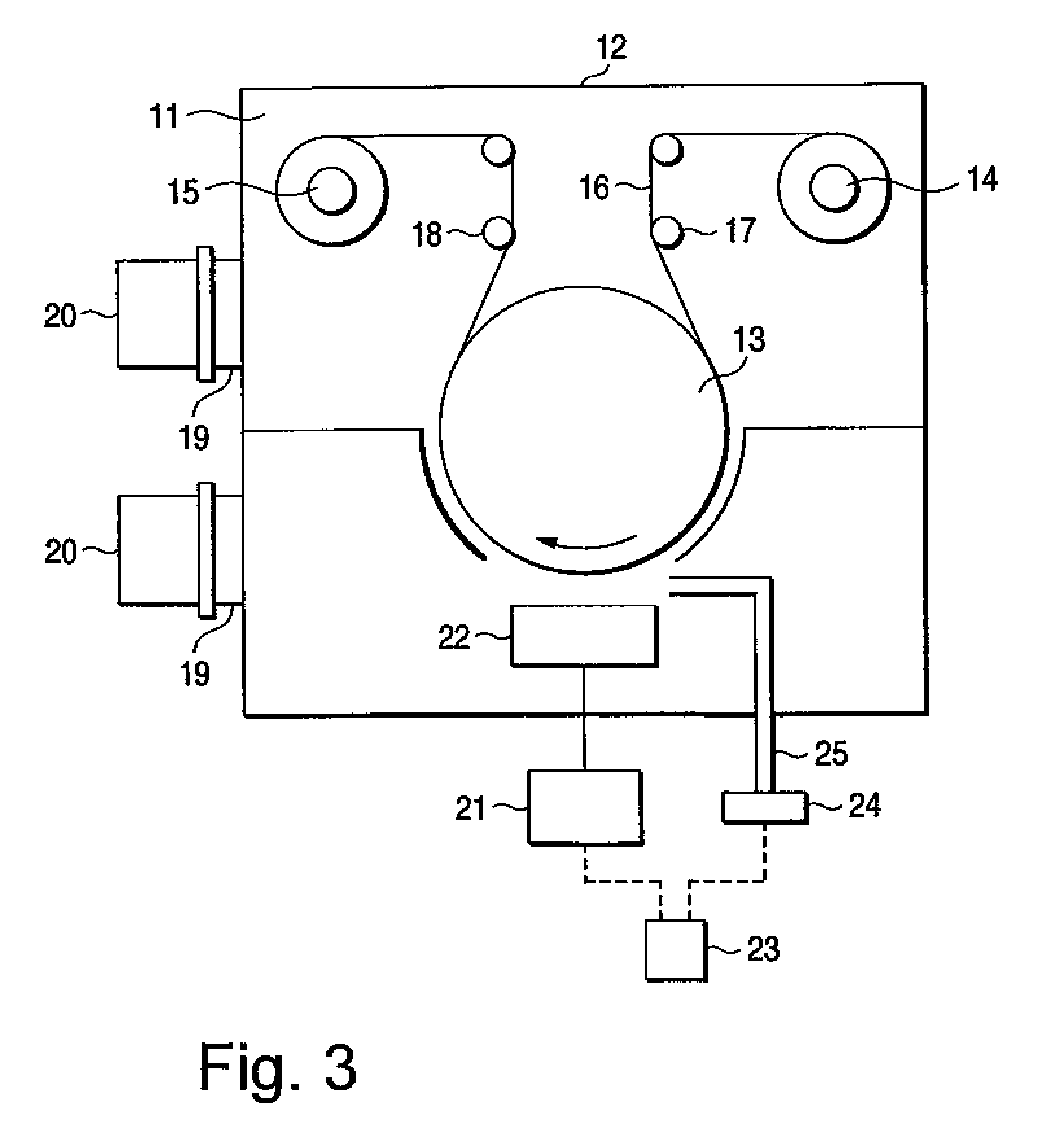Organic electroluminescent device comprising ceramic sheet and graphite sheet
a graphite sheet and electroluminescent device technology, applied in the direction of incadescent cooling arrangement, discharge tube luminescnet screen, discharge tube main electrode, etc., can solve the problems of reducing the luminescence lifetime and not reaching full-fledged practical use, and achieve the effect of high refractive index
- Summary
- Abstract
- Description
- Claims
- Application Information
AI Technical Summary
Benefits of technology
Problems solved by technology
Method used
Image
Examples
example 1
[0110]On a glass supporting substrate having a dimension of 25 mm×25 mm×0.5 mm, an anode of indium tin oxide (ITO, indium / tin=95 / 5 by mole) was formed by the sputtering method. On the anode, copper phthalocyanine (CuPc) was formed to a thickness 10 nm as a hole injecting layer by the vacuum deposition method, and N,N′-dinaphthyl-N,N′-diphenylbenzidine was formed thereon to a thickness of 40 nm as a hole transporting layer by the vacuum deposition method. On the hole transporting layer, 4,4′-N,N′-dicarbazolediphenyl as a host material, [(4,6-difluorophenyl)-prydinate-N,C2′] (picolinate) iridium complex (Firpic) as a blue light-emitting material, (2-phenylpyridine) iridium complex (Ir(ppy)3) as a green light-emitting material, and bis(2-phenylquinoline)acetylacetonate iridium as a red light-emitting material were co-deposited to a weight ratio of 100 / 2 / 4 / 2 to obtain a light-emitting layer having a thickness of 40 nm. On the light-emitting layer, 2,2′,2″-(1,3,5-benzenetriyl)-tris[3-(2-...
example 2
[0111]A light-emitting device was obtained in the same manner as in Example 1 except that a graphite sheet (PGS graphite sheet, thermal conductivity: 800 W / m·K) was used instead of the ceramic sheet.
example 3
[0112]A light-emitting device was obtained in the same manner as in Example 1 except that in Example 2, a ceramic sheet (thermal emissivity: 0.96, thickness: 300 μm, produced by Ceramission Co., Ltd.) was attached to the graphite sheet (PGS graphite sheet, thermal conductivity: 800 W / m·K) on the aluminum cathode.
PUM
| Property | Measurement | Unit |
|---|---|---|
| thermal conductivity | aaaaa | aaaaa |
| thickness | aaaaa | aaaaa |
| thermal emissivity | aaaaa | aaaaa |
Abstract
Description
Claims
Application Information
 Login to View More
Login to View More - R&D
- Intellectual Property
- Life Sciences
- Materials
- Tech Scout
- Unparalleled Data Quality
- Higher Quality Content
- 60% Fewer Hallucinations
Browse by: Latest US Patents, China's latest patents, Technical Efficacy Thesaurus, Application Domain, Technology Topic, Popular Technical Reports.
© 2025 PatSnap. All rights reserved.Legal|Privacy policy|Modern Slavery Act Transparency Statement|Sitemap|About US| Contact US: help@patsnap.com



